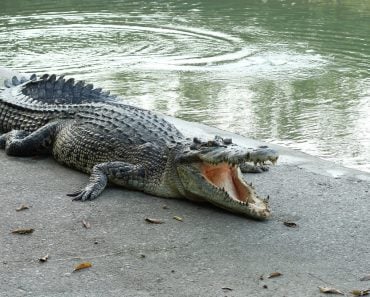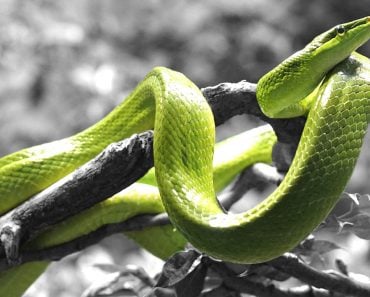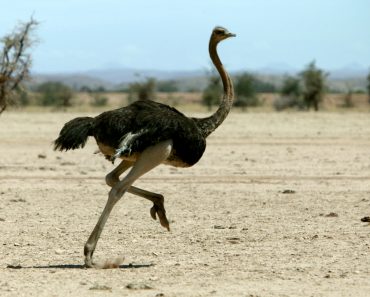Table of Contents (click to expand)
Birds are reptiles. Birds, lizards, crocodiles, and other reptiles have all evolved from a single common ancestor. In other words, all reptiles are more closely related to each other on the evolutionary tree than they are to any other animal. We have fossil evidence of birds having evolved from dinosaurs.
When we think of ‘reptiles’, we often picture a scaly animal, most likely a lizard or a crocodile, crawling through a swamp or wetland. We imagine a long body, shiny scales, and a sniffing tongue. They’re not animals we normally associate with a gentle or friendly demeanor. After all, who would be keen to pet a rattlesnake?
Light and bright feathers, a sweet chirp, and a majestic plume—the essential picture of a bird—do not accompany our imagination of a reptile. Birds make people think of flowers, flight and large flocks adorning a clear, blue sky. We don’t necessarily draw similarities between reptiles and birds, since we don’t see snakes and alligators flying, nor do we spot crows and flamingos with scaly bodies.

But according to our best scientific evidence, birds are related to reptiles!
Recommended Video for you:
Taxonomic Classification Of Reptiles And Birds
Whether birds are reptiles or not is a classification problem. Do we put birds in the same bucket as reptiles, or do they belong in a new bucket?
Carolus Linnaeus concluded that birds and reptiles belong to different buckets.
The Linnaean approach to classification was based purely on the hallmark physical features of an animal or plant. We call these phenotypical characteristics: anything that can be observed in a creature’s appearance is an expressed trait or phenotype.
Basically, according to Linnaeus, birds and lizards look and behave too differently to be related.
Beyond appearance, birds and reptiles don’t share similar physiological features. Reptiles are cold-blooded or ectothermic, while birds are warm-blooded or endothermic. Ectothermy means that the animal changes its internal body temperature using heat from the environment. In contrast, endothermic animals maintain a constant internal body temperature by generating heat through bodily processes. That said, some reptiles do show endothermy in specific situations. For example, female pythons shiver to generate heat to incubate their eggs.
There are a few points of intersection as well. Both groups are oviparous, meaning that they lay eggs (although quite a few snakes do give birth to live young).
Clearly, classifying birds and reptiles based on physical or physiological traits is messy.
Tracing The ‘Family’ Tree
This is where we draw lines of similarity, not horizontally, but vertically, tracing the ancestors of two groups of organisms. In this way, we can see how they might have originated from a common ancestor.
There was a common ancestor between modern humans and chimpanzees, and then we branched off into our current forms. When we ask, “Are birds really reptiles?” we must delve into when and how reptiles and birds appeared in their current separate forms.
We know that dinosaurs and crocodiles are the ancient ancestors of lizards and that modern birds came after them. So, the question arises, “Did bird-like animals exist while dinosaurs were still alive?”
Yes, they did!
The origin of bird genes, which include wide forelimbs and feathers, seems to have been present from the time of the early dinosaurs, specifically Archosaurs. The group of Archosaurs includes dinosaurs, lizards, turtles, and the ancestors of birds.
Fossil records over many decades have revealed the ancestry of current reptiles to early crocodiles that inhabited the earth around 350 million years ago, and dinosaurs, which started roaming the earth 100 million years later.
The diagram below shows the common ancestor of all reptiles. Notice on the top that all lizards share a common ancestor. Notice that birds are included, having evolved from the first reptile.

Fast-forward a few more million years, when a sub-group under Archosaurs emerges, called Theropods. These would go on to become the true ancestors of present-day birds. These dinosaurs were some of the first to develop wings and feathers. A classic example of a winged theropod is the Archaeopteryx.

When the first Archaeopteryx fossil was discovered in 1860, it set in motion an avalanche of theories that spearheaded the confirmation that birds are evolved dinosaurs. Subsequently, the next discovery of the fossil of Xiaotingia zhengi in 2011 in China established it as an earlier relative of birds than Archaeopteryx. The newest discovery of the oldest bird is now thought to be Epidexipteryx. Scientists published research about this pigeon-sized dinosaur that sported bright ribbon-like feathers, which were not meant to be used for flight, but perhaps for balancing on tree branches.
Now the question arises, why should a terrestrially thriving group of reptiles take to the skies? The answer lies in a few different theories and threads of evidence.
Take-off
The first is the hypothesis suggesting that these reptiles would have developed or evolved longer and feathered forelimbs to help them ascend and descend cliffs and mountains with ease. The evolution of feathers may have begun to help them survive in landscapes for purposes other than flight, such as more efficient movement. The usage of aerodynamics to aid in navigating challenging topographies seemed like an obvious step forward.
The second reason has more to do with vanity than locomotive advantage. Feathers, especially long and colorful ones, ensured the chance of finding a better mate for reproduction than one without any ornamental appendages.

The last indication that supports the statement that birds evolved from dinosaurs is the latter’s high rate of metabolism and quick growth. The reason this stands out as an anomaly is that cold-blooded reptiles traditionally have slower rates of metabolism and growth, as compared to warm-blooded birds and mammals. Scientists have suggested that such functioning of the body could only mean one thing – dinosaurs were slowly developing the ability to maintain their body temperature for some tasks, but also being able to switch modes and adapt to their environment. This is a phenomenon called facultative endothermy.
So, to answer the question posed at the top of the article: Yes, birds are reptiles, but just from a different lineage, one that changed so much along the way that they are now placed in a different phylogenetic classes!
References (click to expand)
- 5.1: Linnaean Classification.
- Taxonomy - Linnaean System, Classification, Naming.
- Griffin, D. K., Larkin, D. M., O’Connor, R. E., & Romanov, M. N. (2022, December 27). Dinosaurs: Comparative Cytogenomics of Their Reptile Cousins and Avian Descendants. Animals. MDPI AG.
- Xu, X., Zhou, Z., Dudley, R., Mackem, S., Chuong, C.-M., Erickson, G. M., & Varricchio, D. J. (2014, December 12). An integrative approach to understanding bird origins. Science. American Association for the Advancement of Science (AAAS).
- Forster, C. A., Sampson, S. D., Chiappe, L. M., & Krause, D. W. (1998, March 20). The Theropod Ancestry of Birds: New Evidence from the Late Cretaceous of Madagascar. Science. American Association for the Advancement of Science (AAAS).
- Clarke, J. (2013, May 10). Feathers Before Flight. Science. American Association for the Advancement of Science (AAAS).
- Brusatte, S. L. (2024, January 8). Sexual selection and the evolution of dinosaur flight. Proceedings of the National Academy of Sciences. Proceedings of the National Academy of Sciences.
- Grady, J. M., Enquist, B. J., Dettweiler-Robinson, E., Wright, N. A., & Smith, F. A. (2014, June 13). Evidence for mesothermy in dinosaurs. Science. American Association for the Advancement of Science (AAAS).
- Wiemann, J., Menéndez, I., Crawford, J. M., Fabbri, M., Gauthier, J. A., Hull, P. M., … Briggs, D. E. G. (2022, May 25). Fossil biomolecules reveal an avian metabolism in the ancestral dinosaur. Nature. Springer Science and Business Media LLC.













